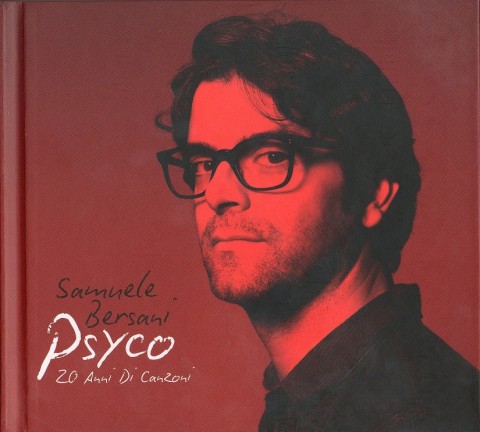

In 1992, he presented his first album, “C'hanno preso tutto”, from which emerged the single “Chicco e spillo”. Samuele Bersani made his artistic debut in 1991, in Lucio Dalla’s tour “Cambio”, singing “Il mostro” with only piano accompaniment.

She appeared in the film “Jack Frusciante è uscito dal gruppo”, taken from the novel of that name by the Bolognese writer Enrico Brizzi. Born artistically in the 1980s, she alternated musical engagements with the theatre and the cinema. In 1993 she took part in the Festival di Sanremo with “A piedi nudi” and in 1994 she made the “Mi vuoi bene o no?” This was followed in 1996 by “Baraldi Lubrificanti”. Together with these, there emerged the Starfuckers and other groups which matched post rock influence with experimentation and avant-garde mingled with literature, proposing a break with the canons on which rock had run aground.Īngela Baraldi made her debut on record in 1990 with the album “Viva”, produced by Lucio Dalla and the Pressing label. Arising from this context were the Massimo Volume of Emidio Clementi and Umberto Palazzo, who moved away to form the Santo Niente. In this, the city mirrored its geographical position, becoming at one and the same time a hub of convergence and a nucleus of expansion on the Italian scene.Ĭoexisting in the area of Via del Pratello were artistic entities born from the combined experiences of squatting. “SxM”, as well as being the first album of the Sangue Misto, bored a furrow in the structure of the hip-hop movement that went far beyond the Bolognese dimension. and, in 1994, “SxM” dei Sangue Misto, in which Neffa, DJ Gruff and Deda took part. The Century Vox label, born in Bologna in the context linked to the Isola nel Kantiere, produced Isola Posse All Stars, Sud Sound System, Papa Ricky, O.T.R. It marked a turning point in the growing Bolognese and national hip-hop culture, which had a fundamental contribution in Soul Boy. The song placed prime emphasis on youthful unrest, which was strongly felt in the city as a result of the social trauma of the preceding years. In 1991, Isola Posse All Stars published “Stop al panico” as a reaction to the Uno Bianca murders. The initial punk and hardcore energy was evolving towards the nascent Bolognese hip-hop movement, partly as a result of the graffiti experience. The Isola nel Kantiere was an artistic laboratory, open to creative and communicative influences. Eclectic and active in various musical areas, it developed a catalogue of over 12,000 titles, distributed throughout the world, including house, acid jazz, funk, fusion, disco and much more. It was named after a Bolognese brothel of the 1950s. IRMA Records was an independent label created in 1988. It offered concerts by local and national artists, including independents, with a wide range of styles. This yearly summer event attracted a vast audience and was received with enthusiasm. In 1993, the Scandellara Rock Festival was inaugurated in the park of the same name along the city bypass. The city also opened towards musical influences, going beyond the mainstream. The Parco Nord, also in the outskirts, hosted festivals, concerts and international events dedicated to the wider city audiences, such as Monsters of Rock, the Independent Days Festival and MTV Day. Initially in the outskirts, in the Quartiere San Vitale, it later moved to premises along Via Stalingrado, near the Arena Parco Nord, subsequently named after Joe Strummer, leader of the Clash. As well as the Covo, Via Zagabria was home until 1993 to the Sottotetto Music Club, which then moved further into the outskirts, in the Quartiere San Donato. The Covo Club, born during the previous decade in the attics of the Casalone di San Donnino, increasingly came to the fore in the panorama of live music in the city, hosting local, national and international artists. Underground music was increasingly establishing itself in the outskirts, seeking here its identity and liberty, especially through rehearsal rooms, youth centres, festivals and events. The occupied spaces in the outskirts were hotspots of activity and Bologna was at the centre of the new languages, from avant-garde to post-rock, rap and hip-hop.Ī snapshot of Bologna in the early 1990s reveals a wealth of parallel, superimposed artistic movements and currents, some congruent, some not. Music reverberated high and low: in the cellars, in the studios, in the theatres.


 0 kommentar(er)
0 kommentar(er)
